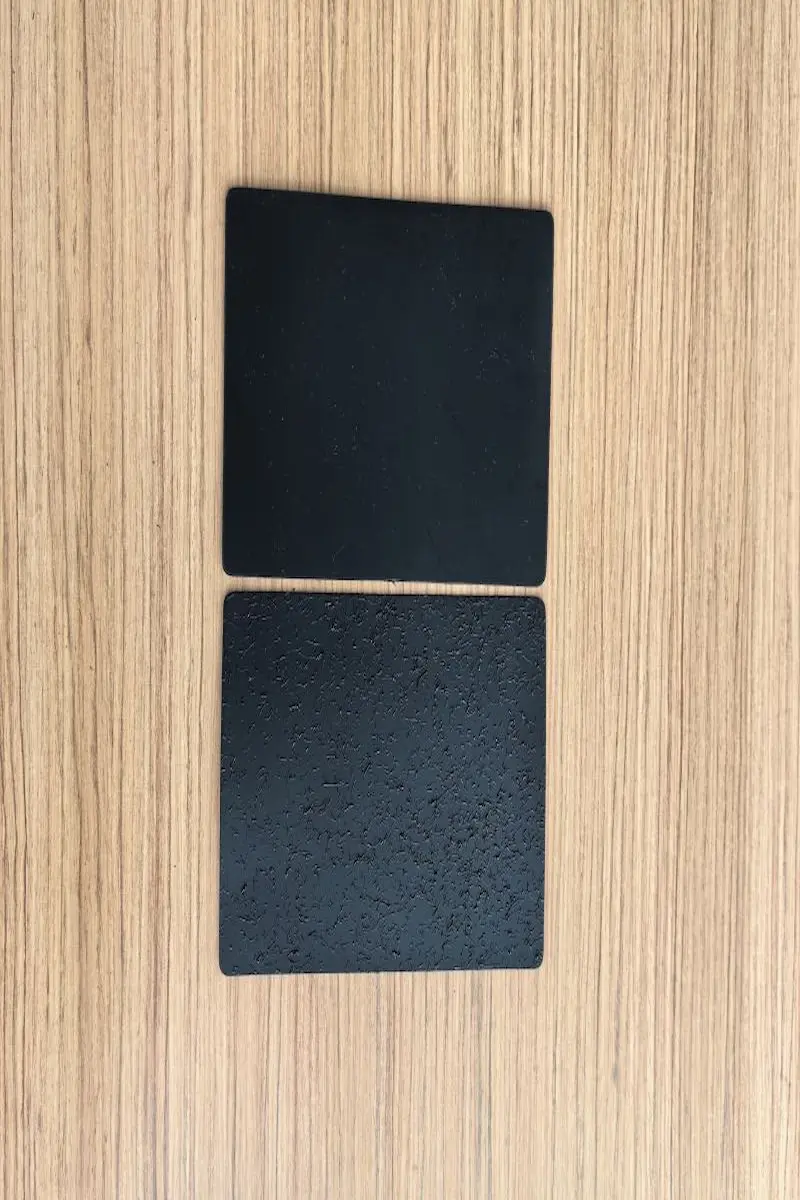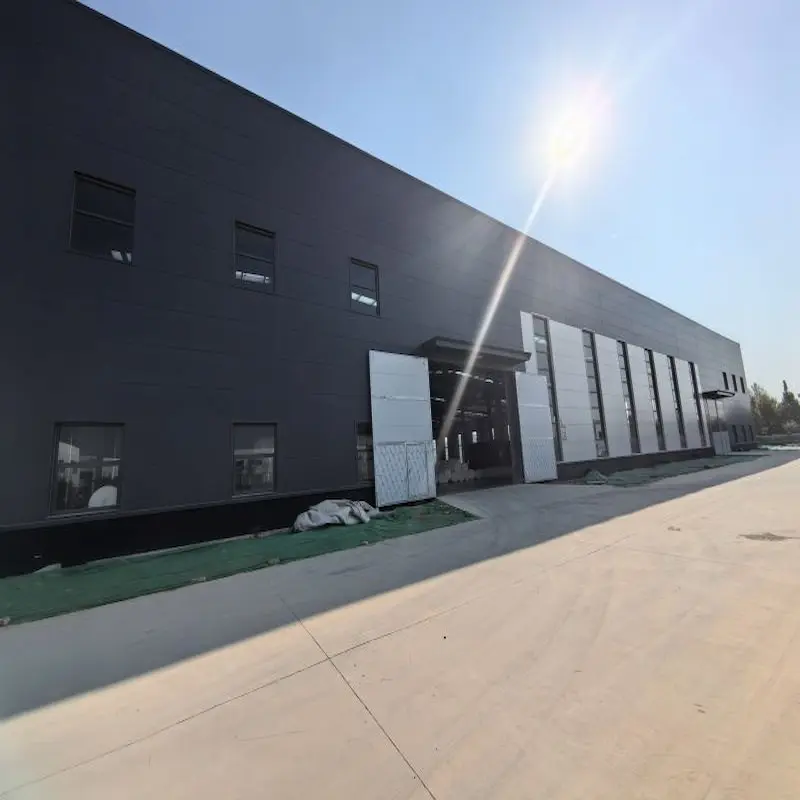What Is a Geomembrane?
A geomembrane is a synthetic liner or barrier designed to prevent fluid migration. Typically made from polymers like High-Density Polyethylene (HDPE), Low-Density Polyethylene (LDPE), or Polyvinyl Chloride (PVC), geomembranes are known for their durability, flexibility, and impermeability.

Key Features of Geomembranes
· High impermeability
Geomembranes are designed to prevent the passage of liquids or gases, making them highly effective as barriers in containment systems like landfills, reservoirs, and canals.
· Chemical resistance
They resist degradation and corrosion when exposed to various chemicals, acids, and alkalis, making them suitable for use in industrial and hazardous waste containment.
· UV and weather durability
High tensile strength and resistance to environmental stress, UV radiation, and weathering ensure a long lifespan even under harsh conditions.
· Ease of Installation
They are available in large rolls and can be welded or bonded to ensure seamless installation over large areas.
Common Types of Geomembrane for Pond
Type
| Material
| Features
| Features
|
HDPE Geomembrane
| Polyethylene
| High strength, UV-resistant, durable
| Large ponds, aquaculture
|
PVC Geomembrane
| Vinyl
| Flexible, easy to install, cost-effective
| Small decorative ponds
|
EPDM Geomembrane
| Rubber
| Elastic, resistant to environmental stress
| Irregular-shaped ponds
|
LLDPE Geomembrane
| Polyethylene
| Flexible, durable, good puncture resistance
| Industrial and landscaping ponds
|
Specifications of Geomembrane for Pond
When selecting a geomembrane for pond construction, specific technical parameters are critical to ensuring the right fit for your project. Below are some key specifications:
Material | HDPE, LDPE, PVC, or Polypropylene |
Thickness | 0.3 mm to 2.0 mm |
Density | Typically 0.94–0.97 g/cm³ for polyethylene-based materials
|
Tensile Strength
| Ranges from 15 to 30 MPa, depending on material
|
Elongation at Break
| Greater than 700% for flexible materials
|
UV Resistance
| High resistance, ensuring long-term outdoor durability
|
Permeability
| Low permeability rates, ensuring water containment |
These specifications should match the intended use case, climate conditions, and the nature of the fluids being contained.
Benefits of Using Geomembranes for Ponds
1. Water Retention Efficiency
Geomembranes offer near-complete impermeability, preventing water loss due to seepage. This is crucial for maintaining water levels in arid regions or for ponds with irregular soil structures.
· Data Insight: Studies indicate that HDPE geomembranes can achieve water leakage rates as low as 10-11 m/s, significantly lower than compacted clay liners.
2. Durability and Longevity
Geomembranes are resistant to UV rays, chemical exposure, and biological degradation. With proper installation and maintenance, they can last for decades.
· Expected Lifespan: HDPE geomembranes typically last 20–30 years under normal conditions.
3. Environmental Safety
Using geomembranes helps prevent contaminants from leaching into the soil or groundwater. This is particularly important in ponds used for aquaculture or industrial applications.
4. Cost-Effectiveness
Compared to traditional clay liners, geomembranes are more affordable and require less maintenance.
5. Versatility
Suitable for various pond types, including fish ponds, agricultural ponds, and decorative water features.
Standards of Geomembrane for Pond
When selecting a geomembrane for pond applications, it's essential to adhere to established standards to ensure durability, safety, and environmental compliance. These standards guide material selection, design, installation, and maintenance practices.
1.Material Standards
The Geosynthetic Research Institute (GRI) provides specifications for various geomembrane materials:
· HDPE (High-Density Polyethylene): GRI-GM13 outlines the test methods, properties, and testing frequencies for HDPE geomembranes.
· LLDPE (Linear Low-Density Polyethylene): GRI-GM17 specifies the standards for LLDPE geomembranes, detailing requirements for both smooth and textured variants.
2.Design and Installation Standards
The U.S. Department of Agriculture's Natural Resources Conservation Service (NRCS) provides comprehensive guidelines:
Pond Sealing or Lining with Geomembrane or Geosynthetic Clay Liner (Code 521): This standard offers criteria for design, materials, installation, and maintenance of geomembrane liners in ponds.
Key considerations include:
· Material Thickness: Minimum thickness requirements vary based on the application, with HDPE liners typically requiring a minimum of 60 mils (1.5 mm) for wastewater applications.
· Anchorage: Proper anchoring methods are essential to prevent liner displacement due to wind or water forces.
· Subgrade Preparation: The subgrade must be smooth and free of sharp objects to prevent liner punctures.
3.Quality Assurance and Testing
Ensuring the integrity of the installed geomembrane is crucial:
· Electrical Liner Integrity Surveys: These surveys detect leaks in geomembranes post-installation, ensuring the liner's effectiveness.
· ASTM Standards: The American Society for Testing and Materials provides various standards for testing geomembrane properties, including tensile strength, puncture resistance, and seam integrity.
Application of geomembranes for ponds
Geomembranes are versatile and can be tailored to various pond applications. Here are some of the most common uses:
1. Agricultural Ponds
Agricultural ponds require reliable water storage for irrigation. Geomembranes ensure minimal water loss and protect against soil erosion.
· Case Study: A farm in California reduced irrigation water loss by 40% after installing HDPE geomembrane liners.
2. Decorative and Landscaping Ponds
For residential or commercial landscaping, geomembranes offer an aesthetically pleasing and functional solution. Flexible materials like PVC or EPDM are often used to accommodate irregular shapes.
· Installation Tip: Decorative ponds benefit from black geomembranes, which enhance the visual depth of the water.
3. Aquaculture Ponds
Aquaculture requires strict water quality control. Geomembranes prevent contamination and facilitate easy cleaning, making them ideal for fish farming.
Factor
| With Geomembrane
| Without Geomembrane |
Water Quality
| High
| Variable
|
Maintenance Effort
| Low
| High
|
Contamination Risk
| Low
| High
|
4. Industrial Effluent Ponds
Industries often use ponds to store or treat wastewater. Geomembranes act as a secure barrier, preventing toxic substances from leaching into the environment.
Technical Considerations for Geomembrane Installation
To maximize the performance of geomembranes, proper installation and material selection are essential.
1. Site Preparation
· Grading: Ensure the pond base is smooth and free of sharp objects.
· Compaction: Compact the soil to reduce the risk of punctures.
2. Material Selection
· Factors to Consider: UV exposure, pond size, and intended use (e.g., aquaculture vs. landscaping).
· Thickness: HDPE geomembranes typically range from 0.5 mm to 2.0 mm in thickness. Thicker liners offer better puncture resistance but are less flexible.
3. Installation Best Practices
· Overlap: Ensure a minimum overlap of 100 mm between liner sheets.
· Sealing: Use heat welding for HDPE geomembranes and adhesive sealing for PVC geomembranes.
· Anchoring: Secure the geomembrane in anchor trenches around the pond perimeter.
Cost Analysis
The cost of geomembrane installation depends on the material, pond size, and project complexity. Below is a rough cost estimate for common geomembrane materials:
Material
| Cost per Square Meter (USD)
| Cost per Square Meter (USD)
| Cost per Square Meter (USD)
|
HDPE
| 2.00 - 3.50
| 1.50 - 2.50
| 1.50 - 2.50
|
PVC
| 1.50 - 2.50
| 1.50 - 2.50
| 2,500 - 4,500
|
EPDM
| 3.00 - 4.50
| 3.00 - 4.50
| 5,000 - 7,500
|
Maintaining Geomembrane-Lined Ponds
1. Regular Inspections: Periodically check for visible damage, such as punctures or UV degradation.
2. Prompt Repairs: Use patch kits or welding techniques to address any tears immediately.
3. Minimize Exposure: Cover exposed sections with soil, rocks, or vegetation to reduce UV damage and temperature fluctuations.
4. Avoid Sharp Objects: Ensure the pond environment remains free from debris that could puncture the liner.
Environmental and Safety Considerations
Compliance with environmental regulations is mandatory:
· EPA Regulations: In the United States, the Environmental Protection Agency (EPA) has guidelines for the use of geomembranes in applications like coal ash ponds, emphasizing the need for liners to prevent groundwater contamination.
· Safety Measures: Designs should incorporate safety features such as fencing and signage to prevent unauthorized access and ensure human and wildlife safety.
Future Trends in Geomembrane Technology
1. Enhanced Materials
New polymer blends and additives are improving the UV resistance, flexibility, and puncture resistance of geomembranes.
2. Sustainability
Recycled geomembranes and biodegradable alternatives are being developed to reduce the environmental impact of synthetic liners.
3. Smart Liners
Smart geomembranes with embedded sensors can monitor leakage, stress, and temperature changes in real-time, providing early warnings of potential issues.
Conclusion
Geomembranes are an indispensable component for constructing durable, efficient, and environmentally safe ponds. By choosing the right material, ensuring proper installation, and considering long-term maintenance, geomembrane-lined ponds can serve a variety of purposes with minimal environmental impact. Whether you’re building a decorative pond or an industrial effluent storage system, geomembranes offer a versatile and reliable solution.


897.webp)
942.webp)
237.webp)